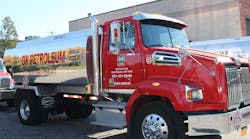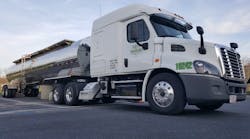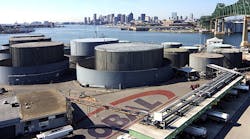Bendix Spicer Foundation Brake LLC, responding to industry confusion about the performance of replacement brake linings in the new reduced stopping distance (RSD) era, recently completed stopping-distance testing and analysis of RSD-compliant brakes relined with a range of aftermarket friction products. Based on its findings, the company strongly recommends choosing like-for-like OE friction when replacing the linings on Bendix brakes engineered to meet the federal RSD mandate. Doing so allows fleets to maintain RSD compliance and helps improve fleet safety.
“Highway safety is our passion and at the forefront of our thinking,” says Eddie Wilkinson, BSFB president. “We have invested millions of dollars in research and development to develop new brake designs that meet and exceed the government mandate for reduced stopping distances on new vehicles. Since these vehicles will continue to share our roads after servicing, it’s vital that we help fleet operators make informed decisions to maintain that same high level of safety and performance.”
In August 2011, the National Highway Traffic Safety Administration (NHTSA) mandated a 30% reduction in stopping distance for new three-axle tractors with gross vehicle weight ratings (GVWRs) up to 59,600 pounds. RSD is meant to significantly improve safety, avoid highway fatalities, and reduce the number of rear-end collisions. Phase two of the mandate, aimed at tractors with two axles, as well as severe service tractors with GVWRs above 59,600 pounds, takes effect August 1, 2013.
The longtime industry standard test for certifying brake linings, Federal Motor Vehicle Safety Standard (FMVSS) 121, is no longer adequate in the RSD environment. Most linings that pass the dynamometer requirements do not meet today’s higher vehicle performance requirements.
Bendix compared the 60 mph stopping distance of an RSD-compliant vehicle equipped with high performance brakes and linings against several pre-RSD OE brake linings. The RSD-compliant vehicle used Bendix High Performance ES (Extended Service) Brakes. Bendix High Performance Friction had a stopping distance of 215 feet, well under the 250-foot limit established by the federal mandate. None of the comparison friction used in the RSD brake test met the stopping distance requirement, according to Bendix officials.
Delivering lower fade and better thermal management, High Performance (HP) Friction from Bendix performs at high heat better than any previous OE drum brake linings, resulting in significantly shorter stopping distances.
“Prior generation friction material formulations available throughout the industry are simply not engineered to this same performance standard,” says Gary Ganaway, director of marketing and global customer solutions for BSFB. “To avoid confusion and potential risks to safety, we strongly encourage replacing friction like-for-like when relining Bendix High Performance ES Brakes. By doing so, fleets will have the peace of mind that comes from maintaining braking capability, helping to mitigate risk and achieve an attractive return on investment.”








